Question
There is growing evidence of a decrease in bee populations. This decrease is a serious problem because of their valuable role as pollinators in the ecosystems where they live. Neonicotinoid pesticides have been implicated in this decrease because they have been found at trace levels in the nectar and pollen of crop plants and in the bee colonies. Scientists placed colonies of a species of bumblebee, Bombus terrestris, in the laboratory to test the effects of different levels of a neonicotinoid on their development. They divided the colonies into three groups:
- The control colonies were given a solution of water and sugar that resembled nectar produced by flowers.
- A second group of colonies was given the same sugar solution containing a neonicotinoid dissolved in it at low concentrations, similar to those found in nature.
- A third group of colonies was given the same sugar solution containing a neonicotinoid dissolved in it at high concentrations, similar to those found in nature.
After two weeks, all colonies were placed in the field to allow the bumblebees to feed naturally.
(a) (i) Describe the effect of neonicotinoid pesticides on the nervous system of insects.
The mass of the colonies, including adult bumblebees, wax, honey and larvae, was recorded every week. The cumulative increase in mass was calculated and is shown on the graph.
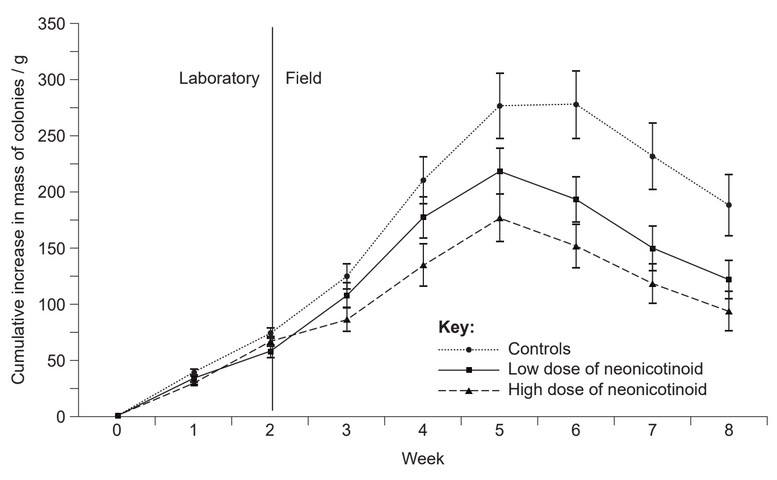
(ii) State the cumulative increase in the mass of control colonies at 7 weeks.
(iii) Compare and contrast the cumulative increase in mass of the three groups of colonies once they were placed in the field.
(iv) Suggest a reason for the changes in mass in the colonies between weeks 6 and 8.
The number of queen bumblebees produced in each colony was recorded. New bumblebee colonies are started by a queen.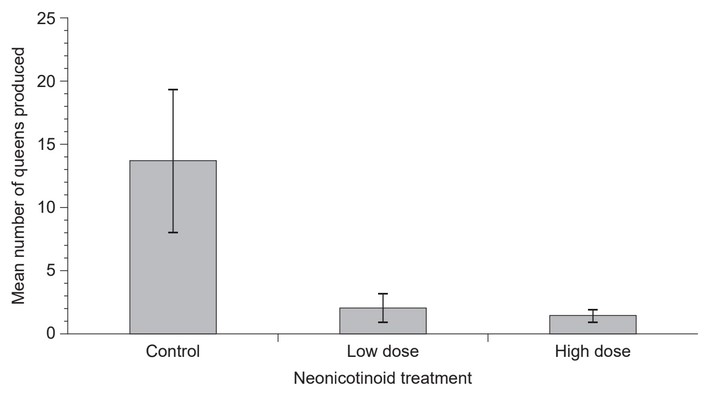
(b) Using the data in the graph, predict how the use of neonicotinoid pesticides will affect bumblebee populations.
A similar study compared the effect of a different neonicotinoid on four different species of bumblebees. The queens were exposed to either control conditions (with no pesticide), or low or high doses of neonicotinoid. The scientists then measured the average length of the developing eggs in the ovaries of the queens.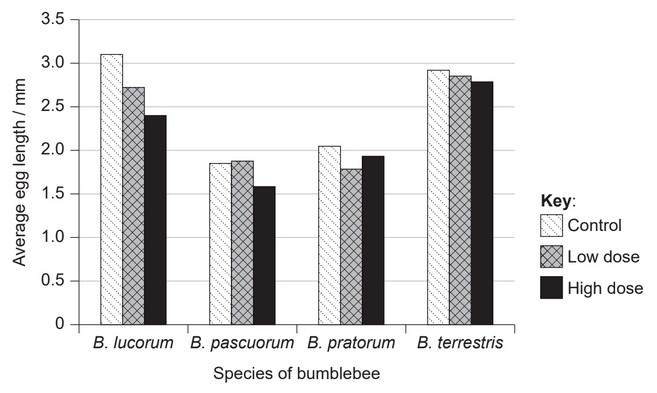
(c) (i) Identify the species whose eggs are most affected by a high dose of neonicotinoid.
(ii) Describe the overall effects of low and high doses of neonicotinoid on the egg lengths of all four species.
(d) Deduce, based on the data presented, whether the levels of neonicotinoids used in agriculture cause direct harm to B. terrestris.
Answer/Explanation
Ans:
a) i.
a. blocks synaptic transmission at (cholinergic synapses);
b. binds to (acetylcholine) receptors;
ii. 230 g;
iii.
a. all increased in (cumulative) mass gain up to 5–6 weeks
OR
all decreased (in cumulative mass gain) after 6 weeks;
b. both with neonicotinoids have significantly lower (cumulative) mass than the control
colonies (at all periods)
OR
colonies exposed to high concentration always had the lowest (cumulative) mass gain;
iv. a. less production of honey/wax;
b. fewer bees/dispersal of bees/queens;
c. bad weather/environmental change/predators/disease/pests;
b)
a. number of populations may/will decrease;
b. both treatments decreased very significantly the number of queens;
c. low treatment had (almost) the same effect as the high
OR
even low levels have as toxic/lethal effects as high levels;
d. without new queens, new colonies cannot be founded;
e. no/less/little reproduction (as only queens lay eggs);
f. new colonies are essential to maintain bumblebee populations;
c) i. B. lucorum;
ii.
a. low doses caused (slight) decrease in (average) egg lengths in 3 species/most species
OR
low doses caused a slight increase in 1 species/B. pascuorum;
b. high doses caused (slightly) lower (average) results in all 4 species (compared to control);
c. in only one species/B. pratorum, the high doses caused larger lengths than the low doses;
d)
a. yes, as even low/both doses (of first neonicotinoid) affect the (overall) development of colonies
negatively; (From Graph 1)
b. yes, as decreased numbers of queens (likely) affect reproductive capabilities; (From Graph 2)
c. the second neonicotinoid (likely) had less/little/no effect on the bees as it had little effect on egg
Question
(a) Melatonin helps to control circadian rhythms in the body. The graph shows the mean levels of melatonin in the body in day and night workers over 24 hours.
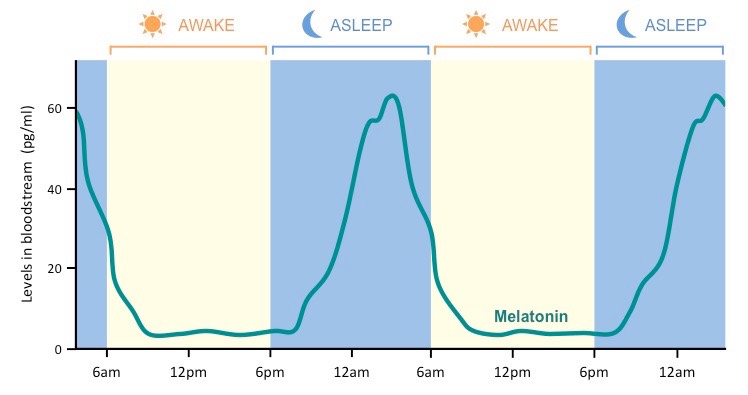
(i) State where melatonin is produced in the body.
(ii) Describe one difference between melatonin levels of day and night workers.
(iii) Deduce, with a reason, what time of day would be a good time to take melatonin if you have travelled over several different time zones and are jet-lagged on your arrival.
(b) The Davson-Danielli model of membrane structure was proposed in the 1930s. When electron micrographs of membranes were first produced, they were used as evidence for this model. The micrograph shows two adjacent membranes (indicated with arrows).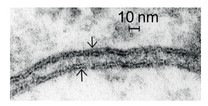
Explain how the appearance of membranes in electron micrographs was used as evidence to support the Davson-Danielli model.
Answer/Explanation
Ans:
a) i. pineal gland ;
ii. lower in night workers
OR
later increase/phase difference/shift in night workers;
iii. Time of day:
around 18:00 (locally);
OR
time that is in the range of local standard bed time;
Reason:
need to re-establish the increase that occurs after 18:00 hours / reestablish circadian rhythm /
OWTTE;
b) a. the black lines represent proteins;
b. forms a ‘sandwich’/2 layers;
c. there is a clear layer in the centre;
d. (the clear layer) is composed of phospholipids;
